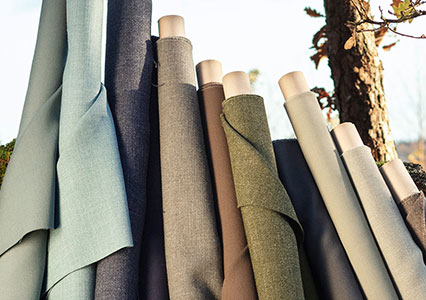In the context of the corona pandemic, many are wondering about antibacterial treatments of textiles. People want to know if it’s something we use or could offer. The short answer is no, as it is not possible to combine effective treatment with the Ecolabel sustainability label.
The long answer comes here:
Bacteria and viruses
Viruses and bacteria are both microorganisms that can cause infections in our bodies, they behave in very different ways. Bacteria actually live their own lives. They can multiply by division and survive outside the body. Viruses need to infect a living cell in order to replicate and survive for a longer period of time. The differences mean that there are a number of medical treatments (antibiotics) that respond to bacteria but not to viruses. Most viral infections are dealt with by the body's own immune system. However, there are effective ways to prevent them. Partly with vaccines, but also by fighting the viruses before they enter the body. In the case of textiles, we are talking about antibacterial treatments, which means that they are effective mainly against bacteria. But in some cases, they can also be effective against viruses, such as the coronavirus.

The purpose of antibacterial textiles
The most important reason to equip textiles with antibacterial properties is to reduce the spread of infections and contagions. Therefore, such textiles are perhaps most important for hospitals, nursing homes and other facilities in care and nursing. But of course, they can be of interest to all sorts of work settings. Antibacterial textiles could be a good addition to important measures such as hand washing, surface disinfection and proper cleaning. During the pandemic, we have received many questions about this topic. That's why it's important to us and that's why we investigated what alternatives there are.
Three types of treatments
We have explored the three following treatment methods that make textiles antibacterial in different ways:
Biocides |
Substances that become active on contact |
Anti-adhesion |
|
Biocides are substances that kill bacteria and other living organisms. This method is therefore based on adding substances that are toxic to the bacteria. These substances leak out of the fabric over time, killing bacteria that come in contact with it. Most commercial solutions available today work this way. But they have their shortcomings. Over time, the antibacterial effect decreases because the toxic substance completely leaks and runs out. In addition, the biocides are not compatible with the Ecolabel. |
Substances that become active on contact are another solution. This means that chemicals are applied to the surface of the textile that puncture the bacteria when they get there. The commercial products found in this segment are also based on biocides. However, this method does not cause them to leak. But because of the toxins they contain, the treatments are also not compatible with the Ecolabel. |
The third and final method we looked at is anti-adhesion. This means that the surface of the textile is treated in a way that causes the bacteria to slide off instead of sticking to it. There are commercial treatments, but the big problem is that they are not very effective. |
How we work
We place high demands on our textiles, not least when it comes to sustainability. Many products already meet the criteria for the Ecolabel, and by 2025 this will apply to the entire range. However, this cannot be reconciled with any of the available antibacterial treatments that have proven to be effective. The problem is that they are based on toxic biocides. Therefore, we are not pursuing any of these approaches at this time.
However, we continue to explore alternative treatments. Among others, we are working with the Research Institute of Sweden (RISE) to find an environmentally friendly solution. Until then, please refer to our recommendations for the safe handling of textiles in challenging times. You can find them here.


